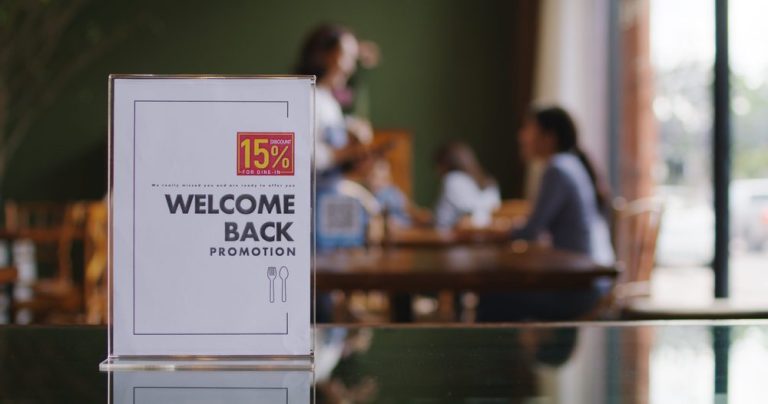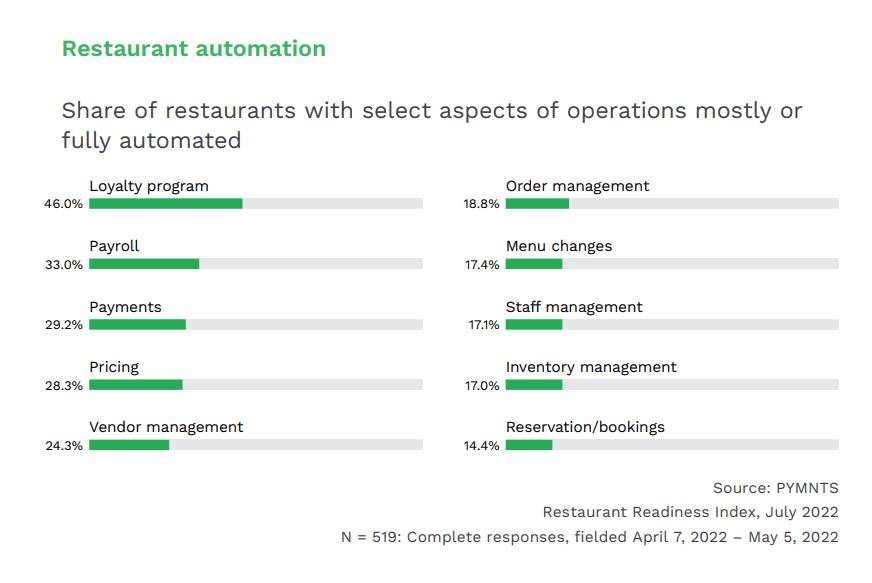
Independent and smaller chains new to rewards offerings may find themselves overwhelmed trying to go it alone.
For most restaurants, the pandemic was just the beginning of revenue troubles. To survive lockdowns and other related challenges, eateries had to adapt quickly. Many adopted consumer-facing digital platforms and established hybrid in-person dining procedures to protect the health of their staff and customers to stay afloat. Then, inflation and continued supply chain issues ate further into restaurant operating budgets, leading owners to raise prices to compensate. These higher prices have resulted in numerous ripple effects, including reduced tipping: 29% of diners surveyed said they tip less due to what they perceive to be a growing gap between meal costs and their satisfaction.
To counter these expanding costs, some restaurants are automating some aspects of their operations. As noted in the PYMNTS collaboration with Paytronix, “Restaurant Readiness Index,” modernized loyalty programs top that list.

The survey covers restaurants of all sizes, showing just under half have implemented a modernized loyalty system. This includes medium-sized and larger quick-service restaurant (QSR) players who tend to have implemented some kind of digital rewards program long ago. However, that isn’t necessarily true for single-location or smaller chains, which now may be weighing the benefits of rewards and loyalty programs to increase traffic, gain returning customers and boost revenue. Therefore, it stands to reason that many restaurants that have not yet implemented a modernized loyalty program may be smaller sector players.
Previous PYMNTS research demonstrates that customers may be lured by rewards and other value-driven loyalty programs. For example, 53% of consumers said they would be more inclined towards pickup for their next restaurant order if offered a 5% discount on their purchase. In a separate survey, 37% of consumers say they are encouraged to make restaurant purchases based on rewards and loyalty programs.
In an interview with PYMNTS, Or’el Anbar, director of analytics at fast-casual chain Just Salad, emphasizes the importance of a robust rewards program on customer engagement in this cost-conscious environment. “With some of the macroeconomic trends ahead, I think it would make sense if rewards programs started to become more generous, and more restaurants are participating in them. Because it’s easy to roll out to a lot of point-of-sale systems and use the technology restaurants already have in place to now offer rewards functionality, and customers are going to be looking for value.”
Creating and managing this offering may seem overwhelming for QSRs who have not yet launched loyalty or rewards programs. After all, this is one more effort on top of all the many other challenges facing smaller business owners. However, a third-party provider may assist with implementation and reduce any headaches from adopting a new system. Some partners offer tools as needed on an “as-a-service” basis, while others supply more robust support. No one approach may work best and might be tailored to meet the unique needs of individual QSRs.
Loyalty efforts tend to have an effect on diners, especially those patronizing QSRs. For sector eateries that have so far avoided implementing rewards programs to increase customer loyalty, following the lead of larger players may be the correct move.